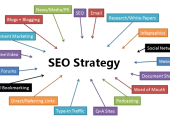How To Conduct Effective Competitor Analysis To Boost Revenue?
A competitive analysis is an effective business strategy that involves researching major competitors to gain in-depth knowledge of their products, sales, and marketing tactics. Implementing a more robust business marketing strategy, warding off competitors, and penetrating market share are just a few advantages of conducting a competitive market analysis.
Competitive analysis can aid you in learning the ins and outs of how your opposition works and identify potential hidden opportunities where you can outperform them.
It lets you stay on top of industry trends and ensure your product consistently meets and exceeds industry standards.
What Are The Benefits of Competitor Analysis?
-
Helps you determine your product’s unique value proposition and what makes your offerings different from the competitors’, which can educate future marketing efforts.
-
Allows you to identify what your competitor is doing right. This information is crucial for staying relevant and ensuring your product and marketing campaigns outperform industry standards.
-
Informs you about where your competitors are lacking behind. This information helps you identify areas of opportunity in the market and test out new, unique marketing strategies they haven’t leveraged.
-
Learn through customer reviews to identify what’s missing in a competitor’s product and examine how you might bridge that gap with your product to meet those needs.
-
Offers you a benchmark against which you can measure your growth.
How to Effectively Conduct a Competitor Analysis?
Here are a few ways to conduct a successful competitor analysis, helping you boost revenue.
1. Determine Your Competitors
First, you’ll need to figure out whom you’re competing with to compare the data accurately. What works in a similar company may not work for your brand. So how can you do this?
Divide your “competitors” into two simple categories: direct and indirect.
Direct competitors are organizations that provide a product or service that could pass as a substitute for yours and operate in the exact geographic location.
Conversely, an indirect competitor offers different products that could satisfy the same need or solve the same problem.
When comparing your brand, you should focus on your direct competitors. This is something many businesses get wrong.
2. Determine Your Competitor’s Offerings
Before moving ahead, you must analyze your competitor’s entire product line and the quality of their products or services.
You should also consider their pricing and any discounts they’re offering customers. Some questions that you should consider include the following:
-
Are they budgeted or premium providers?
-
Are they working primarily on volume sales or one-off purchases?
-
What are the attributes and needs of their customer base?
-
Are they using multiple pricing strategies for online purchases versus brick-and-mortar?
-
What is their market share?
-
How does the brand differentiate itself from its competitors?
-
How channel of distribution do they adapt for their products/services?
3. Research About The Sales Tactics and Results of Your Competitors
Running a sales analysis of your opposition can indeed be a daunting process. You must track down the answers to questions like:
-
What is their sales process?
-
What channels are they leveraging to sell their products?
-
Do they have several locations, and how does this give them a competitive edge?
-
Are they expanding, or are they scaling down?
-
Do they have introduced reselling programs?
-
What are their revenues every year?
-
What about total sales volume?
-
Do they regularly offer a discount on their products or services?
This helpful information will show you how competitive the selling process is and what information you require to prepare your sales reps to compete during the final buying stage.
4. Analyze Their Pricing
A few crucial factors go into correctly pricing your product, and one most crucial one is understanding how much your competitors charge for similar offerings.
If your product facilitates users with superior characteristics compared to competitors, you must consider making your product or service more expensive than the usual industry standards.
Alternatively, perhaps you identify a gap in your industry for affordable products. In that case, you might aim to price your products at a lesser cost than competitors and appeal to anticipation, which isn’t looking to break the bank for a premium product.
5. Ensure You’re Meeting Competetive Shipping Costs
Nowadays, free shipping is a significant advantage that can attract customers to choose one brand over another. Suppose your business belongs to an industry where shipping is a significant factor, like e-commerce. In that case, you must closely analyze your competitors’ shipping costs and ensure you’re at least meeting (if not exceeding) those quotes.
If most of your opposition offers free shipping, you must adapt the same for your company. If free shipping isn’t a possible option for your organization, consider how you might differentiate in other ways.
6. Identify How Your Competitors Market The Offerings
Analyzing your competitor’s business site is the fastest way to scale their marketing efforts. Identify the following items and pen down the specific links for future reference:
-
Do they have a blog?
-
Are they creating white papers or free-to-download ebooks?
-
Do they post videos or organize webinars?
-
Are they using static visual content?
-
Do they have a podcast?
-
Do they have a FAQs section?
-
Do you see press releases?
-
What about case studies?
-
Do they post buying guides and data sheets?
-
What online and offline marketing campaigns are they running?
7. Identify Their Content Strategies
Then, look at the number of content items on the website and other communication channels. Do they have several blog posts or just a handful?
Next, evaluate the frequency of these content assets. Are they posting something new each week or once a month? How often does an ebook or case study come out?
You should also evaluate the quality of their content. After all, if the quality is not optimum, it won’t matter how often they publish since their target audience won’t be valuable.
8. Learn About Your Competitor’s Technology Stack
Understanding what types of technology your opposition use can be essential for helping your business reduce friction and increase momentum within your business.
For example, perhaps you’ve seen positive reviews about a competitor’s customer service, and you learn the consumer uses powerful customer service software you haven’t leveraged yet. This information should fuel you with the opportunity to outperform your competitors’ processes.
9. Analyze The Engagement Level of Your Competitor’s Engagement
To determine how engaging your opposition content is to their readers, you’ll need to determine how their target audience reacts and responds to what they’re posting.
Check the average of the KPIs, including the number of comments, likes, and shares on your posts, and find out if:
-
Specific topics resonate better than others.
-
The comments are specifically negative, positive, or a mix.
-
People are tweeting about certain specific topics more than others.
-
Ensure noting your competitor identifies their content using tags and if they have a social follow and share button attached to every content piece.
10. How They Promote Their Marketing Content
You’ll move to your competitor’s marketing content promotion strategy from engagement.
-
Image ALT text tags
-
Keyword density in the copy
-
Use of internal linking
These questions can also aid you in prioritizing and focusing on what to pay attention to:
-
Which all keywords are your competitors focusing on that you still haven’t leveraged yet?
-
What type of marketing content of theirs is highly shared and linked to? How does your content compare?
-
Which social platforms are your target audience using the most?
-
What are other websites linking back to your competitor’s website but not yours?
-
Who is referring traffic to your competitor’s website?
-
Who is sharing what your competitors are posting?
Conclusion
Before analyzing your competition, you need to establish a baseline. This also facilitates when it is time to perform a SWOT analysis. Take an objective look at your company, sales, and marketing reports through the exact metrics you leveraged to evaluate your competition. Pen this information just like you would with opposition and use this as your baseline to compare across the board.






